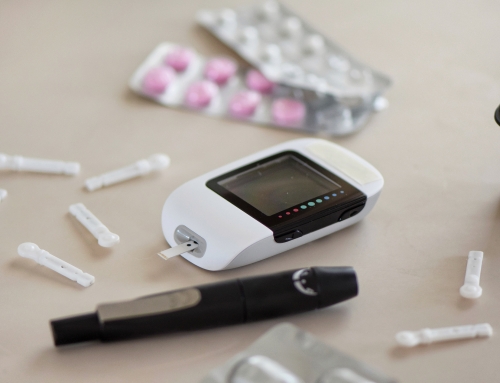While many people learn suddenly that they have kidney failure, or end stage renal disease (ESRD), chronic kidney disease (CKD) happens over time. For those who know they will be facing kidney failure, they have time to learn about the treatment choices, or modalities, available and prepare. Whether a person has months to prepare or needs to make a sudden decision about which modality is right, his or her doctor or nephrologist (doctor specializing in kidney care) will help educate and guide.
Dialysis and Kidney Transplantation
There are two treatments for kidney failure: dialysis and transplantation. Dialysis is a treatment that cleans the blood to remove waste when the kidneys are no longer able to do so. There are multiple forms of dialysis.
Hemodialysis cleans the blood by removing it from the body and filtering it through an artificial kidney.
Peritoneal dialysis cleans the blood using the lining of the abdomen, called the peritoneum, as a filter. A soft tube called a catheter is surgically placed in the abdomen with one end of the tube on the outside of the body that’s used to fill the peritoneum with dialysis fluid and then drain it out after it has had time dwell in the abdomen to remove toxins.
Transplantation is a treatment where a working kidney is removed from one person and placed into the body of a person whose kidneys have failed. The transplanted kidney will function in the recipient’s body.
Both dialysis and transplant require medications be taken. Patients who are physically and emotionally able can start on one treatment and later switch to another depending on their lifestyle and medical condition. Your nephrologist will help you decide which modality may work for you. Here are some details about dialysis choices and transplantation to help you have an informed discussion with your nephrologist and make an educated decision about which modality may be right for you.
Hemodialysis
Hemodialysis Access Options
In order to perform hemodialysis an access must be created that allows blood to flow out of the body to be filtered and then be put back in. There are three access types: catheter, graft and fistula.
Catheter
A catheter is immediately available for use, whereas a graft and fistula need time to be surgically created, heal and mature. For patients who don’t have advance notice that they will need dialysis, a catheter is placed in a vein in the neck, chest or groin so they can receive treatment immediately. Tubes are attached to the catheter; one that lets the blood flow out of the body and a separate one to let the blood back in. With a catheter there is a greater chance of infection and blood flow is not optimal, therefore, groups such as the National Kidney Foundation (NKF) (in their Kidney Disease Outcome Quality Initiative (K/DOQI) guidelines), National Institute of Diabetes and Digestive and Kidney Diseases (NIDDK) and many nephrologists recommend a graft or fistula be used as a permanent access for patients who are able to support a vascular access.
Graft
A graft is surgically created by connecting an artery or vein to artificial tubing usually inside the forearm. It usually takes three to six weeks after placement for the graft to be ready to be used.
Fistula
The preferred type of access is the fistula. A National Vascular Access Improvement Initiative called Fistula First was established by the Centers for Medicare and Medicaid (CMS) along with companies providing dialysis and other members of the renal community to educate patients about the benefits of a fistula based on K/DOQI recommendations. The fistula is surgically created by attaching an artery and vein, usually inside the forearm. It generally takes a couple of months for a fistula to mature—allowing the vein to grow larger and stronger to accommodate dialysis. Fistulas are less likely to form blood clots or become infected, and historically last longer than the other access types.
When using a graft or fistula for hemodialysis, two needles are inserted into the access; one to remove blood from the body and the other to put it back in. While the needle sticks can be painful, many patients report that the sting is only for a second, and after time they get used to it. In addition, a technique called the buttonhole can be used with a fistula. With the buttonhole technique the exact same puncture site is used for every hemodialysis treatment. By using the same puncture site, and holding the needle at the same angle, over time scar tissue develops making it easier and less painful to stick the access.
Whether a patient will have a catheter, graft or fistula will be determined by their nephrologist after a thorough examination.
In-center Hemodialysis
Currently, in-center hemodialysis is the most utilized form of dialysis treatment for Americans with end stage renal disease. With in-center hemodialysis a patient goes to a dialysis center where a staff of nurses and technicians administer treatment. Generally, in-center hemodialysis occurs three days a week for between three to five hours per session. During dialysis treatment the blood is removed from the body via an access (fistula, graft or catheter), filtered through an artificial kidney (dialyzer) and returned back to the body through the access. This blood is filtered many times during treatment to remove waste and maintain the chemical balance in the body. A nephrologist will prescribe the treatment and determine how long it will last. In addition to cleaning the blood, during dialysis treatment patients often will receive intravenous medications, such as erythropoietin and iron, if necessary, to correct anemia.
Because healthy kidneys function all day, everyday, and dialysis sessions are only for a few hours, three times a week, toxins can build up in the body between treatments. Therefore, people on hemodialysis work with a dietitian and are recommended to limit or avoid foods high in phosphorus, potassium and sodium to feel their best between treatments. In addition, since most people with kidney failure are unable to eliminate urine, there are fluid restrictions. Dialysis patients are advised how much fluid to drink per day and what to eat by their dietitian based on their monthly lab reports.
The diet and fluid restrictions are a few of the drawbacks of the drawbacks of hemodialysis. The painful needle sticks are also a negative to some patients. A local anesthetic, such as lidocaine, can be used to help dull the pain, but that also requires a needle stick. Some patients also report being embarrassed by the sight of their fistula and prefer to wear long sleeves.
Many hemodialysis centers have many shifts to accommodate their patients’ lifestyles. For patients who work, they can go to an early or late shift depending on their work or personal schedules. There are some hemodialysis centers that offer nocturnal dialysis, where a patient can come receive treatment overnight.
Pros and Cons of In-center Hemodialysis
Pros
- Trained medical professionals administer care
- No need to self-cannulate (insert needles oneself)
- No need to set up dialysis machine
- Sense of community
- Interact with other dialysis patients
- Regular contact with medical caregivers
Cons
- Need to take time to go to dialysis center
- Need to arrange for transportation to and from center
- Not much flexibility with scheduling treatments
Home Hemodialysis
For people on dialysis who are physically and emotionally able, and who desire more control and flexibility over their treatments, home hemodialysis is another treatment option. With home hemodialysis a patient, along with a partner in most cases, will set up a dialysis machine in his or her home and learn to perform dialysis. This requires a patient, and/or partner, to learn how to self-cannulate, or put the needles into the access, set up the dialysis machine, monitor the machine, take and record vital statistics during treatment and end treatment. Home hemodialysis patients must have a room in their home capable of accommodating the dialysis machine and water treatment (depending of the type of machine selected). They will go through extensive training with a home dialysis training team to learn how to perform dialysis and troubleshoot any issues that may occur.
While a nephrologist will prescribe a dialysis prescription that the patient must follow there is more flexibility when dialyzing at home. Some people perform home hemodialysis three times per week for three to five hours like done in the dialysis center. Other patients perform nocturnal dialysis while they sleep for eight hours three nights per week. Another option is short-term daily dialysis where the patient performs hemodialysis every day for only a couple of hours. Medicare does not currently pay for more frequent dialysis and only reimburses for three treatments per week, or four in very rare cases; however, some insurance companies do. Many patients report that with more frequent or longer treatments they feel better. And, it often allows them to have a more relaxed diet.
People who do home hemodialysis are able to dialyze when they want to so they aren’t dependent on the schedule of a hemodialysis center. They enjoy the freedom of arranging their own dialysis schedule around work and family obligations. Many also prefer the comfort of being in their home during treatment. There are still diet and fluid restrictions for many of those who perform home hemodialysis and they must still be followed by a nephrologist and have their lab work done to determine treatment and diet prescriptions.
Pros and Cons of Home Hemodialysis
Pros
- Flexibility in scheduling treatment
- No need to go to center three times a week
- Comfort of being at home for treatment
Cons
- Need to have a partner to help
- No medical professional present to monitor care or troubleshoot problems
- Need to take have space in home to set up machine
Peritoneal Dialysis (PD)
One advantage of peritoneal dialysis (PD) is that people who choose PD can do it while they sleep using a cycler. The cycler is a machine that fills and drains dialysate into the peritoneal cavity in the abdomen several times during the night. While the dialysate is in the peritoneal cavity, it helps pull toxins from the blood through the peritoneal lining. After a time of dwelling, the dialysate is drained from the peritoneal cavity which is refilled with fresh dialysate. While it may seem difficult to sleep during dialysis, many who choose Automated Peritoneal Dialysis (APD) report that they get used to it and it isn’t an issue.
Another PD option is to perform manual exchanges. In this PD treatment option the patient will fill, dwell and drain dialysate from their abdomen every four to six hours without using a machine. Each exchange takes about 20 to 30 minutes. To perform an exchange the patient will need a clean area as well as access to their supplies. Some people use a combination of APD while they sleep along with a manual exchange during the day.
Because peritoneal dialysis is a form of home dialysis, many people choose PD to have more freedom over their treatment and schedule. Since PD is performed everyday there are also fewer food and fluid restrictions than hemodialysis giving more dietary freedom. Traveling is easier for those on PD since they do not have to arrange for treatment at a hemodialysis center. Instead, they can arrange to have their supplies shipped directly to their destination.
There are usually no limitations to exercise and intimacy due to the catheter. A person on PD must be careful to keep the catheter clean to avoid infection at the site or an infection in the peritoneum called peritonitis. Room must also be available in the home to store the PD supplies.
Pros and Cons of Peritoneal Dialysis
Pros
- Can dialyze during sleep
- No need to go to center three times a week
- Comfort of being at home for treatment
- No need to be stuck with needle each treatment like hemodialysis
- Fewer food and liquid restrictions than hemodialysis
- Don’t need to arrange for dialysis treatment at a center when traveling
Cons
- No medical professional present to monitor care or troubleshoot problems Need to take have space in home to set up machine and store PD supplies
- Need to be careful to not get PD catheter infected
- PD can cause weight gain due to glucose in the dialysate (dialysis solution)
Transplant
Transplant—Cadaver Donor
The waiting list for a kidney transplant can be several years. To be put on the waiting list you must talk to your nephrologist. Your nephrologist will send you to a transplant center for evaluation. If testing determines you are a good candidate for a kidney transplant you will be placed on the list. Then you will be called when a donor is found. Because cadaver kidneys are from people who donate their organs after their death, and there are more people who need kidneys than donate, the waiting list is long.
For the best chance of a successful transplant, tests will be done to match blood type and tissue. While waiting for a matching donor to become available, the recipient will be advised to live a healthy lifestyle to be in the best shape possible for surgery. Because a matching donor may become available on a moment’s notice, the recipient will need to provide phone numbers and contacts so that they won’t miss their opportunity.
Transplant—Living Donor
An option to waiting for a cadaver kidney is to find a living donor. Because the best match is usually a blood relative, your willing family members can be tested to see if they are compatible. More frequently in the news you’ll hear or read about non-related people offering a kidney to a friend, neighbor, coworker or person in their community. There are even strangers who “trade donations” when they do not match their own loved one, but someone else’s. Both donors give their kidneys to the other person’s loved one. Statistics show that living donor transplants have less risk of failure.
Once the kidney is harvested from the donor, an incision is made in the recipient’s side and the new kidney is attached to the renal artery. In most cases the existing kidneys are left in place. After transplant surgery the recipient is monitored for infection, bleeding and rejection after surgery. Once released from the hospital, the recipient will have many follow-up visits with the nephrologist to make sure the patient and new kidney are doing well.
Transplantation—whether with a cadaver or living donor kidney—is not a cure for kidney failure, it is a treatment. This treatment works most like your natural kidney, and allows for more freedom in what you eat and drink and to live a life without dialysis, but there are risks. In addition to the risk of the kidney rejecting and needing dialysis, anti-rejection medicines that must be taken can weaken the immune system making transplant patients vulnerable to infections and a higher risk of cancer. Also, because after 10-15 years only 50% of ransplanted kidneys are still functioning, many people live with the anguish of wondering if and when the donated kidney will fail.
Pros and Cons of Transplant
Pros
- Most like having own kidney
- No need for dialysis
- No food or liquid restrictions
Cons
- Need to take anti-rejection medicines
- May be susceptible to infections
- Donated kidney can fail and dialysis will be needed
Switching Modalities
If after trying one type of modality you decide it isn’t right for you, talk to your nephrologist about the option of switching. Some people prefer going to in-center dialysis and having social interactions with other patients and feel comfortable knowing medical professionals are monitoring their treatment. Other people prefer to have the most freedom possible and believe peritoneal dialysis or home hemodialysis offers them the best option. The choice is personal and only you know what’s right for you along with your doctor’s guidance.
Every patient is different. Based on your lifestyle and personal preferences you can talk to your nephrologist about each modality and ask what recommendations he or she has for you. By knowing your options you can make a decision that will help you live a full life with end stage renal disease.



